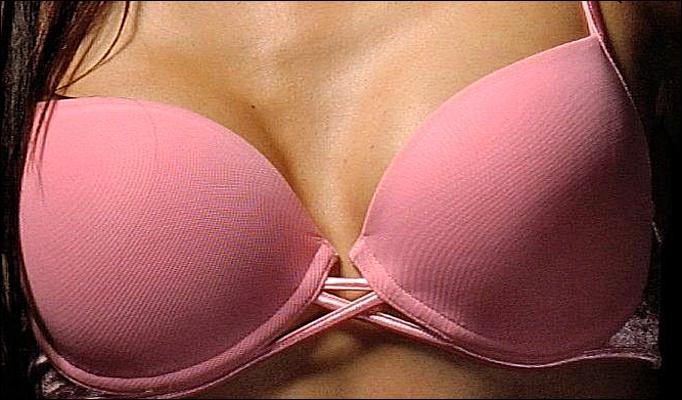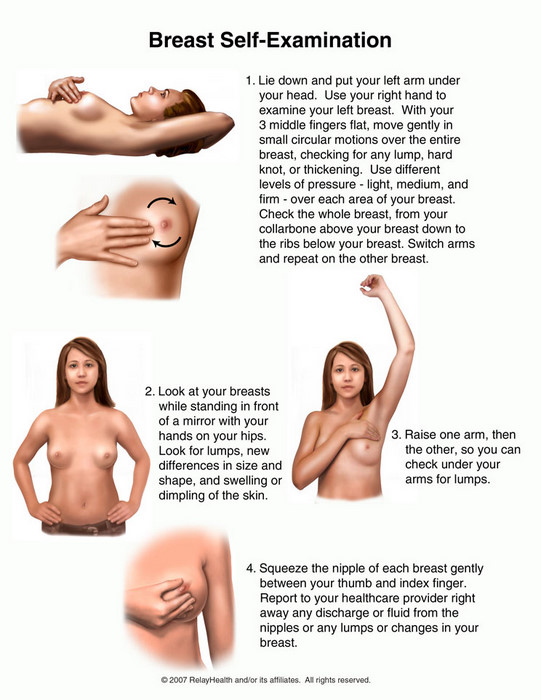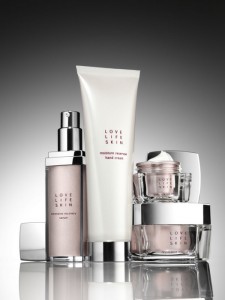Understanding Breast Cancer

What is Breast Cancer?
There are several different types of breast cancer that are divided into two categories – noninvasive cancers and invasive cancers. Noninvasive cancer may also be called “carcinoma in situ.” Noninvasive breast cancers are confined to the ducts or lobules and they do not spread to surrounding tissues. The two types of noninvasive breast cancers are ductal carcinoma in situ (referred to as DCIS) and lobular carcinoma in situ (referred to as LCIS).
Hormones in a woman’s body, such as estrogen and progesterone, can play a role in the development of breast cancer. In breast cancer, estrogen causes a doubling of cancer cells every 36 hours. The growing tumor needs to increase its blood supply to provide food and oxygen. Progesterone is believed to cause stromal cells (the woman’s own cells to send out signals for more blood supply to feed the tumor. – Source: Dr. V. Craig Jordan, vice president and scientific director for the medical science division at Fox Chase Cancer Center in Philadelphia as quoted in NY Times, Hormones And Cancer: By Gina Kolata, Published: December 26, 2006)
Not all Breast Cancers are the same:
Not all breast cancers are same – there are different stages of breast cancer based on the size of the tumor and whether the cancer has spread. Knowing the stage of breast cancer is the most important factor in choosing among treatment options for doctor and cancer patient alike. Your doctor will use physical exams, a biopsy, and other tests to determine the stage of breast cancer.
Early detection
One of the earliest signs of breast cancer can be an abnormality that shows up on a mammogram before it can be felt. A lump in the breast, the most common sign of breast cancer; abnormal thickening of the breast; or a change in the shape or color of the breast. Finding a lump or change in your breast does not necessarily mean you have breast cancer. Additional changes that may also be signs of breast cancer include:
Any new, hard lump or thickening in any part of the breast
Change in breast size or shape
Dimpling or puckering of the skin
Swelling, redness or warmth that does not go away
Pain in one spot that does not vary with your monthly cycle
Pulling in of the nipple
Nipple discharge that starts suddenly and appears only in one breast
An itchy, sore or scaling area on one nipple
Self Examination:
If breast cancer is detected at an early stage of development, there a number of effective treatment options are available. A woman and her physician will choose the treatment that is right for her, based on the location and extent of the cancer, her age and preferences, and the risks and benefits of each treatment. The basic treatment choices for breast cancer are surgery, radiation, chemotherapy, and hormonal therapy. Local treatments such as breast surgery and radiation therapy are focused on the breast itself to remove or destroy the cancer cells confined to the breast. Systemic treatments such as chemotherapy and hormonal therapy aim to destroy the cancer cells that may have spread throughout the body.
Breast cancer cells can be estrogen receptor positive or estrogen receptor negative. Estrogen receptor positive cells are those that have a protein to which the hormone estrogen will bind. Cancer cells that are ER+ need estrogen to grow, and may stop growing when treated with hormones that block estrogen from binding.
Estrogen receptor negative refers to cells that do not have a protein to which the hormone estrogen will bind. Cancer cells that are ER- do not need estrogen to grow, and usually do not stop growing when treated with hormones that block estrogen from binding.
Surgery has an important role in breast cancer treatment. Most women have the option to choose between breast-conserving surgery (lumpectomy, plus radiation) or removal of the breast (mastectomy). Clinical trials have proven that both options provide the same long-term survival rates for most types of early stage breast cancer.
Lumpectomy removes a small tumor and a margin of normal tissue around the tumor. The surgeon also removes some of the lymph nodes under the arm to find out if the cancer has spread. Lumpectomy is followed by radiation therapy to destroy any remaining cancer cells is the standard care.
Modified radical mastectomy is surgery to remove the entire breast, some of the lymph nodes under the arm, and the lining over the chest muscles. It may be appropriate when the breast tumor is large or if cancer is found in more than one part of the breast.
Radical mastectomy involves removal of the breast, chest muscles, and all lymph nodes under the arm. It was the standard treatment many years ago, but it is used now only when a tumor has spread to the chest muscles.
Radiation therapy uses high-energy x-rays to destroy cancer cells. It is usually used after lumpectomy to destroy any cancer cells that still may remain in the breast after surgery. It is sometimes used to shrink tumors before surgery.
Chemotherapy uses drugs, usually a combination of drugs that travel through the body to slow the growth of cancer cells or to kill them.
Hormonal therapy prevents cancer cells from getting the hormones they need to grow. If a breast tumor relies on the body’s natural hormones to grow, it is either estrogen receptor-positive or progesterone-positive. This means that any cancer cells that remain after surgery may continue to grow when these hormones are present in the body. Hormonal therapy can reduce the amount of the body’s natural hormones or block the hormones from reaching any remaining cancer cells.
Women who have received treatment for breast cancer may be at risk of developing lymphedema, a condition in which excess fluid collects in tissue and causes swelling, according to the National Cancer Institute. Lymphedema may occur in the arm or leg after lymph vessels or lymph nodes in the underarm or groin are removed or treated with radiation.
If your treatment protocol includes chemotherapy or radiation therapy, you may have some skin challenges such as skin sensitivity all over or at radiation treatment site. During this time, you may to ensure your diet is rich is foods with high ORAC (oxygen radical absorbance capacity) values, as these foods rich in antioxidants will assist your body recover. You will also have to re-evaluate the products you use daily on your body and especially on the treatment area.
Take these steps to care for your skin in the treatment area:
Check with your doctor or nurse before you put anything on your skin.
Look at the list of skin products on the bottom of this page.
Ask your doctor or nurse which ones are okay for you to use.
Protect your skin.
Make sure your clothing covers the area being treated when you are outside.
Wear clothes that are loose.
Choose clothes and bed sheets made of soft cotton.
Use an electric razor if your doctor or nurse says you can shave.
Care for your skin.
Shower or bathe with warm, not hot, water.
Don’t shower more than one time a day.
If you bathe, limit baths to two times a week. Bathe for less than 30 minutes.
Gently pat your skin dry after showers or baths.
Don’t rub off the markings your radiation therapist made on your skin.
They show where to place the radiation.
Don’t use heating pads, ice packs, or bandages on the area getting radiation.
Don’t use tanning beds. (NEVER A GOOD THING, and should be BANNED,IMHO)
I made a list of all the products I used during my chemo and asked my oncologist what I could keep using and what I should toss or avoid during this trying time. Ask your doctor or nurse to write down names of brands that are okay for you to use during your treatment.
Make sure to include:
face, eye & lip makeup
perfumes (if any)
body washes or bubble baths
bathing gels, salts or sugars
deodorants
shampoo and conditioner
shaving products
toothpaste and mouthwash
face cleansers
makeup removers or wipes
toners
moisturizers
serums
suncreens
products with spf
body powders, etc.
Basically, you should check on every product, as I had a crazy reaction to toothpaste, but my skin is very reactive when I am healthy. Some of the brands and products I used during my chemotherapy, I know I could not have been without as they made me feel a bit normal during a time I felt far from it.
My Survival List:
Weleda Calendula Ointment- used for soothing and healing all over
Whole Foods 365 Organic Coconut Oil- used as a cleanser, scalp/hair conditioner, body moisturizer and salve on my lips
Liquid Crystal deodorant
Dr.Bronner’s Castille Liquid Soap- as shampoo and body wash
Biotene Toothpaste and Mouthwash-prevents dry mouth and ulcers
I avoided makeup as much as I could at this time as even brush strokes were uncomfortable on certain days, but when I did wear makeup I used tarte Mineral Pressed Powders, and color. I have a sensitivity to bismuth oxychloride so tarte cosmetics fit the bill. I know my list is simple, but I felt I needed this simplicity as I could not control the outcome. I learned that I could control my thoughts and feelings, during this scary time. I could be positive and know I would survive. I surrounded myself with beauty and people who were beautiful spirits inside and out (my family and friends truly kept me focused).
I also used CAM (complimentary alternative medicine) during my treatment. Massage, yoga and breath work helped my mind and body. To learn more about the science behind CAM, check out www.spascience.com
To all those battling cancer, no matter the type, we stand with you; Be Brave, Be Strong, SURVIVE.
To learn more about how you can help, go to www.komen.org.
Chandra Bredel is a 3 time cancer survivor – for more information regarding cancer please visit: www.cancer.org or www.cancer.gov




















 Mylifeinbeauty.com is a San Francisco based beauty blog. My Life in Beauty.com provides readers with up-to-the-minute beauty events and trends in the world of Beauty – stay tuned!
Xoxo
Mylifeinbeauty.com is a San Francisco based beauty blog. My Life in Beauty.com provides readers with up-to-the-minute beauty events and trends in the world of Beauty – stay tuned!
Xoxo